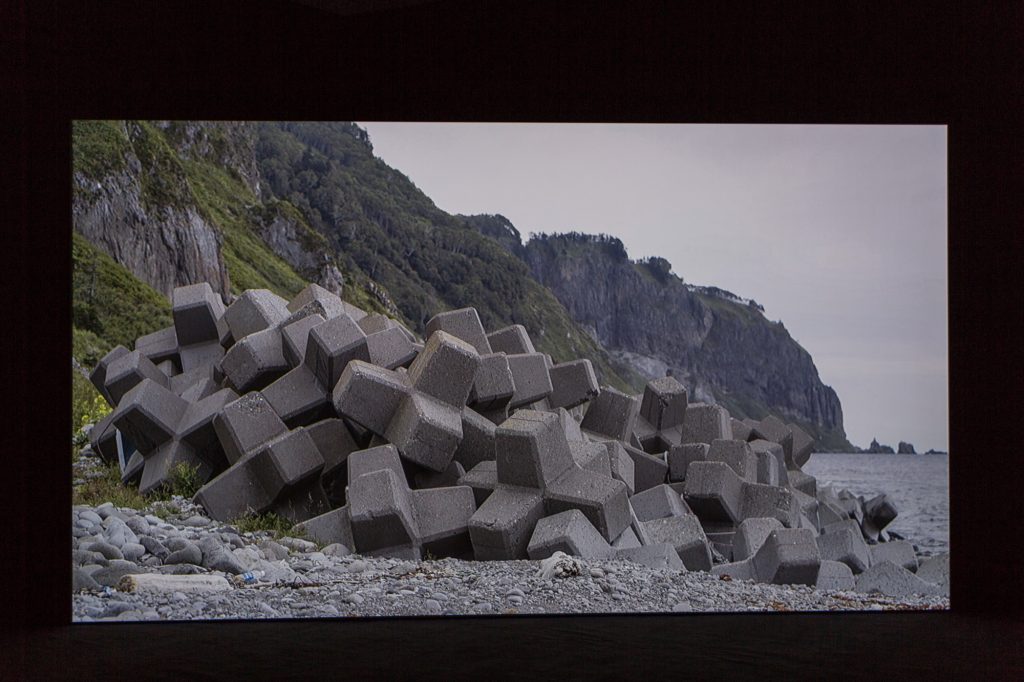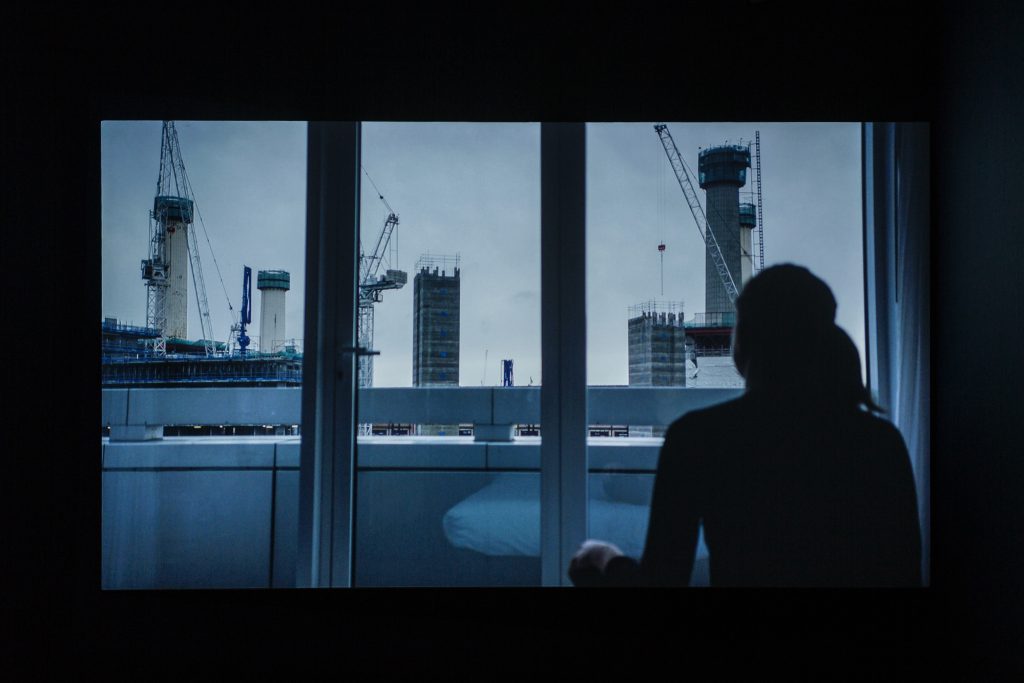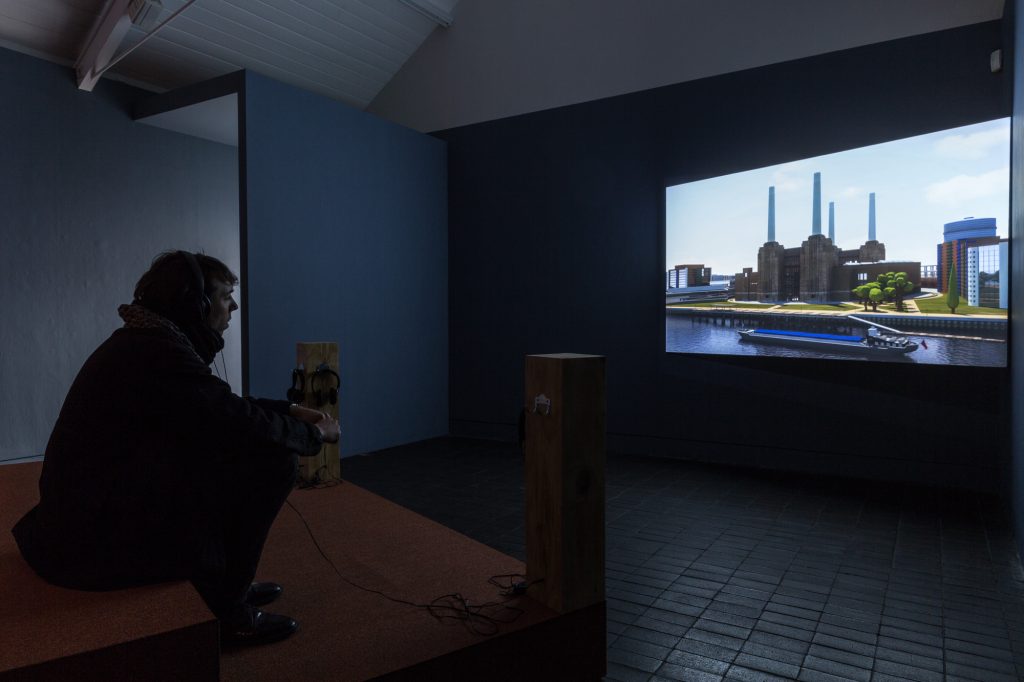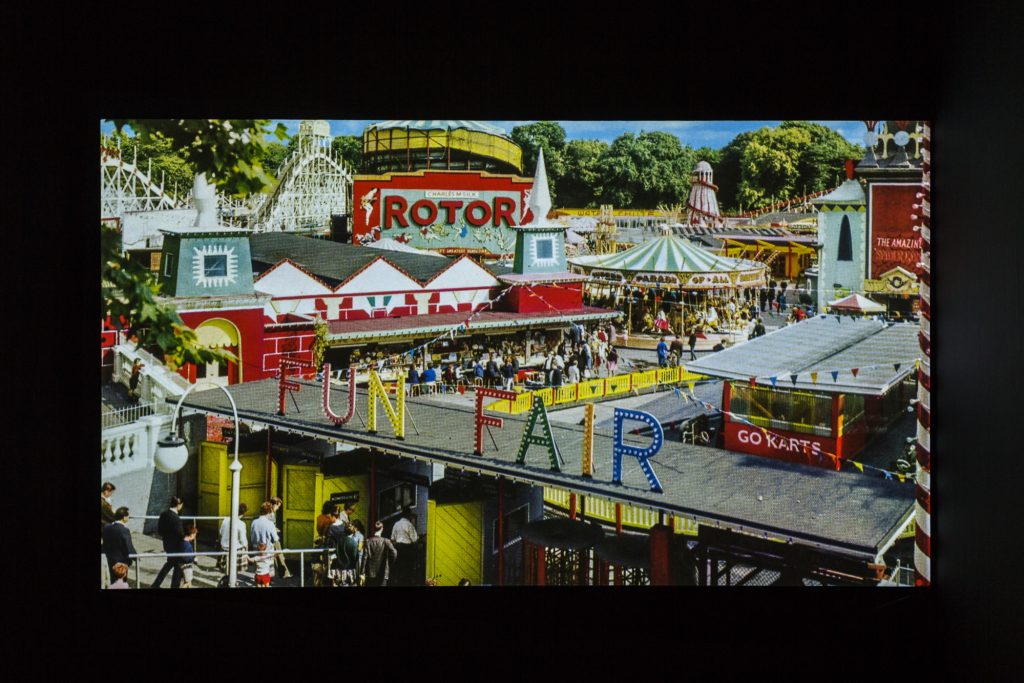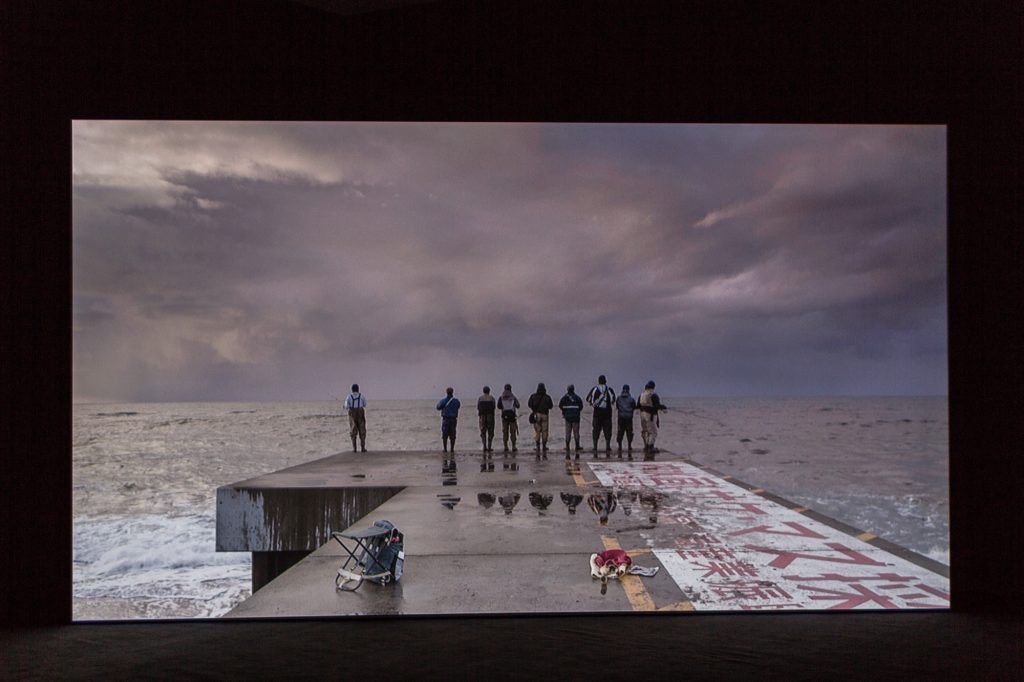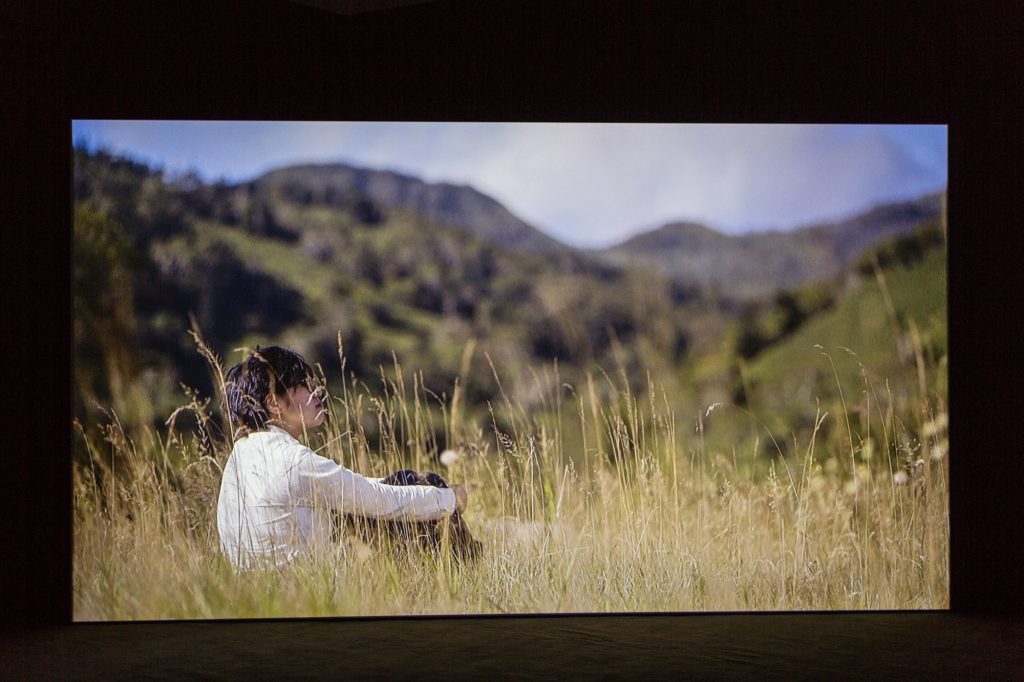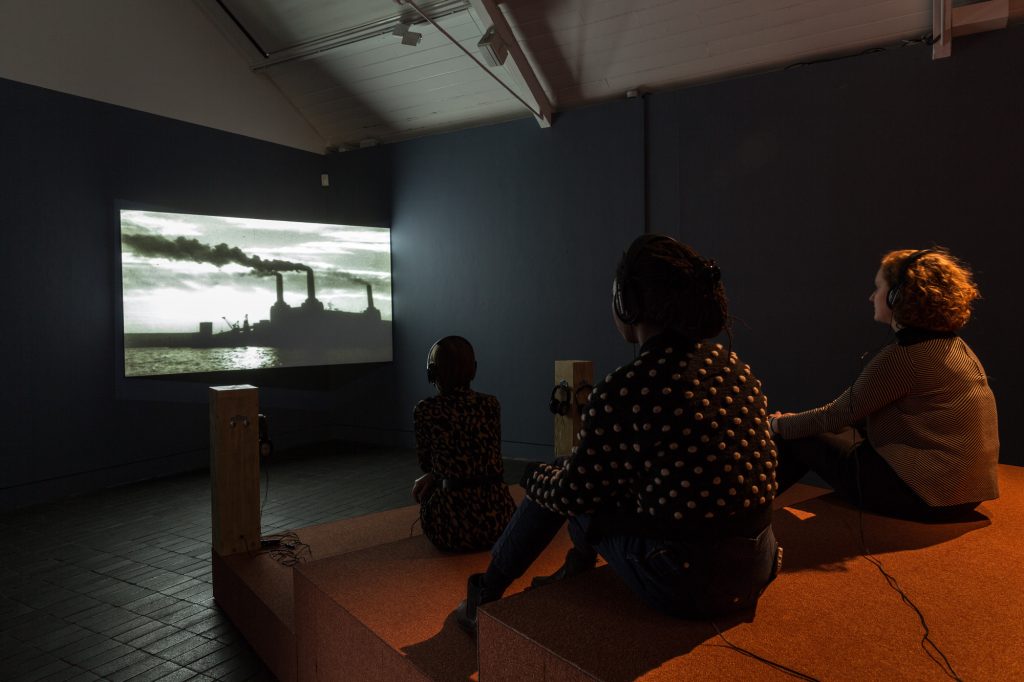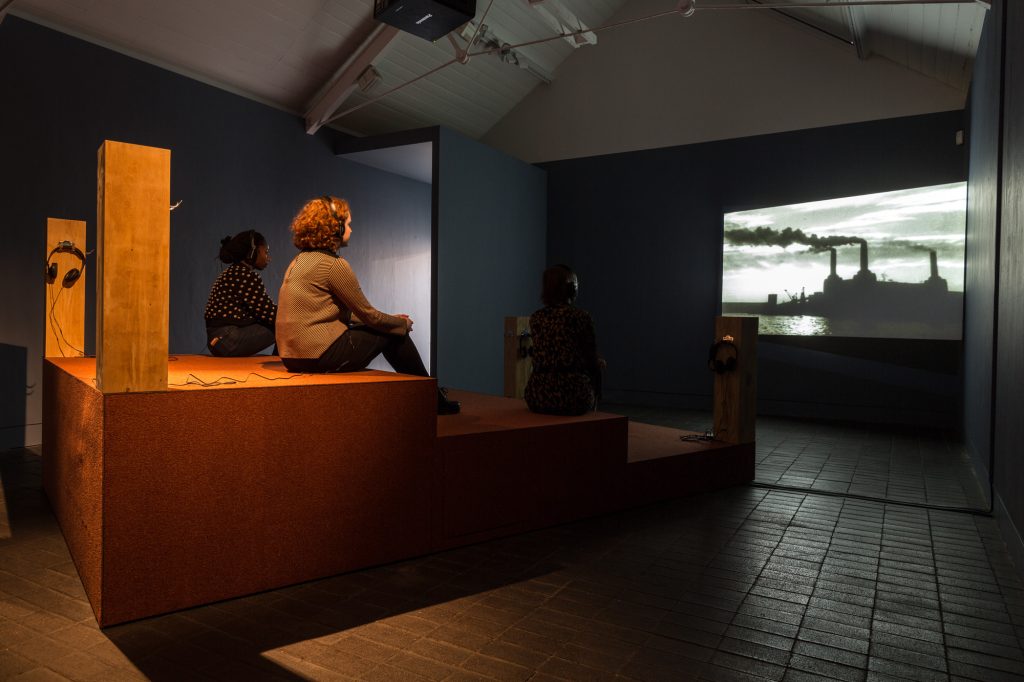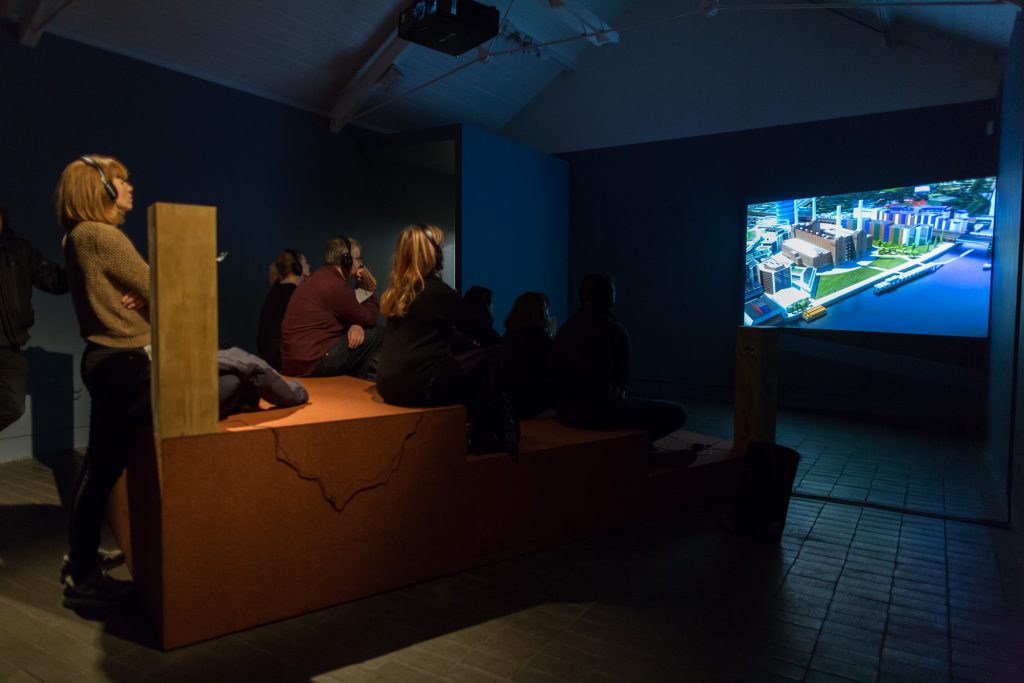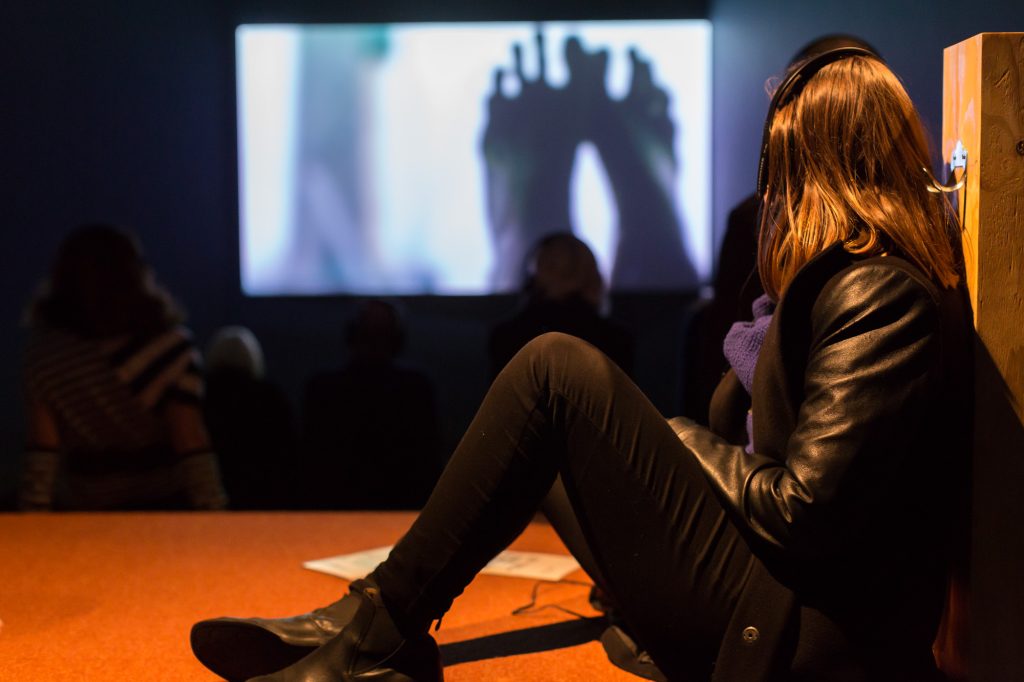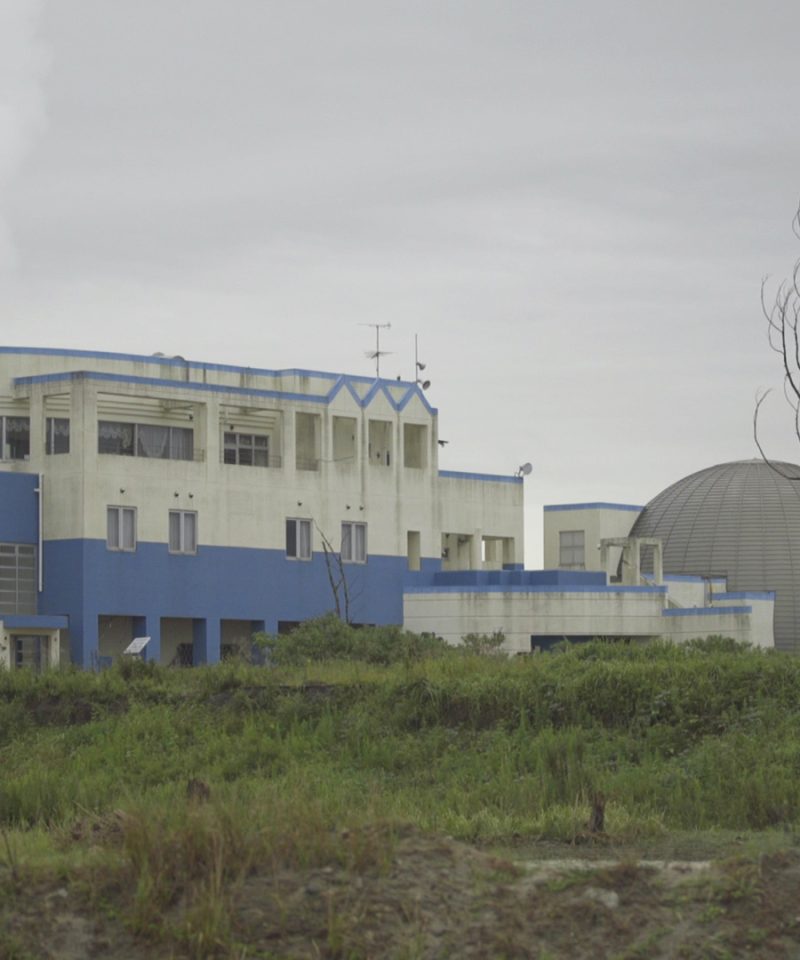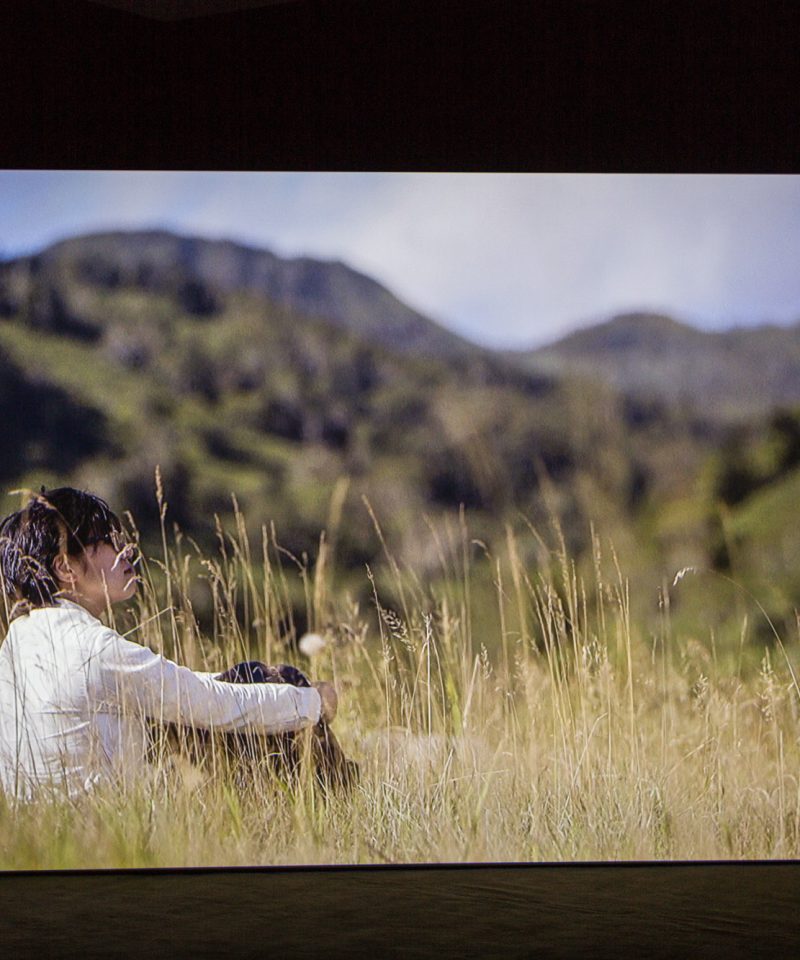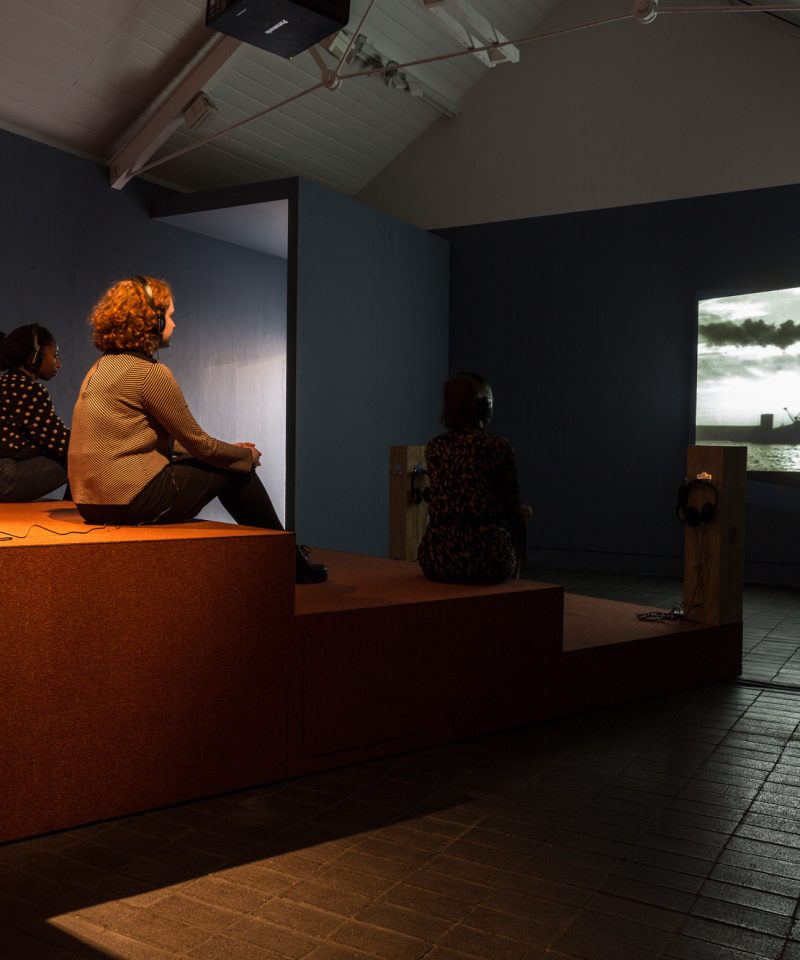Two new moving-image commissions by early-career artists Karen Kramer and Alice May Williams in response to Borrowed Time, the 2016 curatorial theme for the annual Jerwood/FVU Awards. Both installations are significant in scale and by chance take power stations as their setting. The works reflect on the uncertain nature of our contemporary economic and ecological moment, while also alluding to wider historical patterns and elemental forces.
Alice May Williams’ work, Dream City – More, Better, Sooner is a meditation on the changing face of London’s landmark Battersea Power Station, a smokestack energy colossus of yesteryear now rapidly transforming into a lifestyle playground of tomorrow. Combining archive footage of the building in its industrial heyday with computer-generated projections of what it may soon become, Williams’ film attempts to concentrate our attention on the present moment. Reflecting the language of the philosophy of mindfulness, an extended monologue warns of the temptation of succumbing to memories of the past, and of the distractions of speculations about the future, while at the same time undermining its heightened focus on the here-and-now, a key principle of mindfulness. Williams reminds us that Battersea’s marshy riverside location has frequently been a site of flux and transformation; its recent history of power generation paralleled by the various fairgrounds and expos that have happened (or been proposed) near this spot, places of immersion and convergence, as well as places of escape.
Karen Kramer’s work, The Eye That Articulates Belongs on Land, was shot in Shiretoko National Park and around the stricken Fukushima Daiichi nuclear reactor. It explores the ‘re-wilding’ of the landscape around the plant since particular areas became off-limits to human access. Almost five years on from the first radioactive leaks, scientists are starting to be able to better evaluate the effects of Japan’s clean-up programme, while other commentators have been moved to remark on nature’s own ability to repair and re-establish itself. Avoiding romantic notions about the power of nature as a force for recovery or transformation, Kramer’s film is a reminder of how our reading of the landscape is deeply subjective, and prone to being clouded by myth, or partial knowledge. In this, as well as considering a specifically Japanese response to nuclear disaster and airborne contagion, Kramer mobilises figures from Japanese culture and mythology.
The two artists were selected from over 240 applications in response to an open call to UK artists within the first five years of establishing their practice. Each artist received a bursary of £20,000 and production support from FVU with use of the extensive moving-image facilities at University of East London, School of Arts and Digital Industries, in order to make new work over a 10-month period. The artists were selected by an expert panel comprising: Steven Bode, Director of Film and Video Umbrella; Shonagh Manson, Director of Jerwood Charitable Foundation; Francis McKee, Director of CCA, Glasgow; Marianna Simnett, Jerwood/FVU Awards 2015 commissioned artist; and Sam Thorne, departing Artistic Director of Tate St Ives who took up the role of Director of Nottingham Contemporary in early 2016.
The Jerwood/FVU Awards are a major annual opportunity for moving-image artists run in partnership by Jerwood Charitable Foundation and FVU. They were established in 2012 in response to a need for significant major commissions for early-career moving-image artists at an unproven stage in their practice, and contribute to an ongoing dialogue around urgent or timely concerns within moving image through the curatorial theme which changes each year. Alumni include Ed Atkins, Corin Sworn, Emma Hart and Marianna Simnett.

